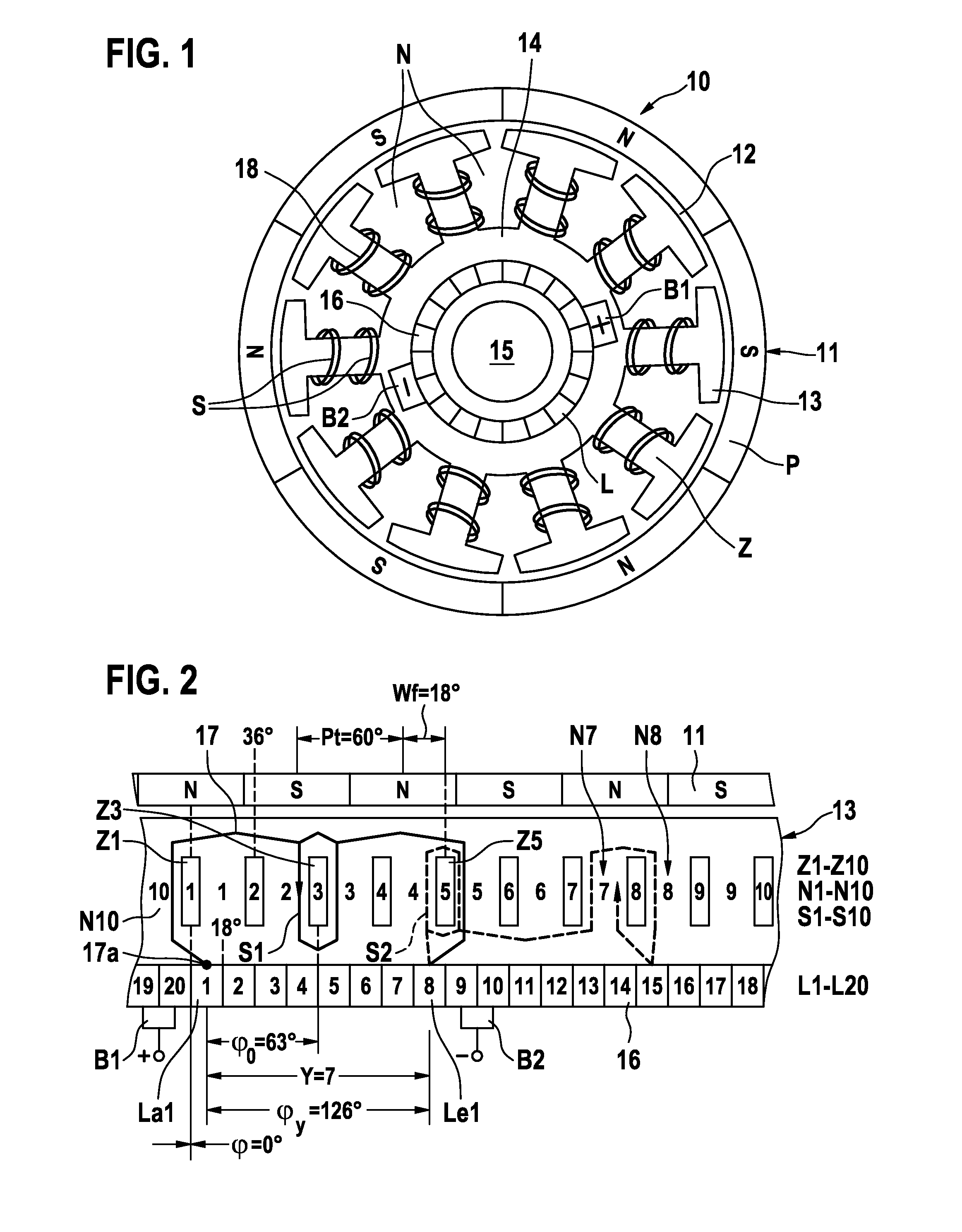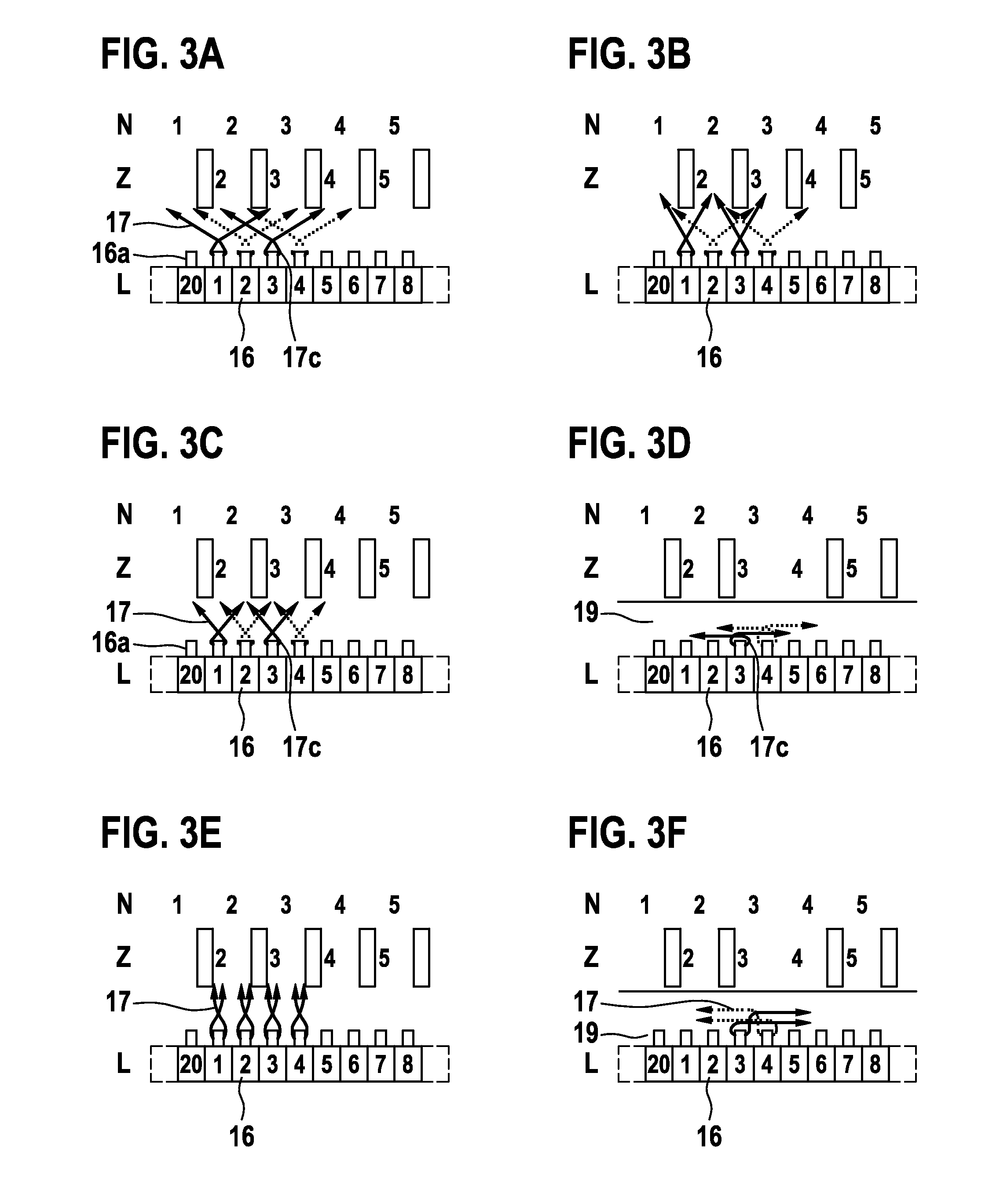Method for producing the rotor winding of an electrical machine, and an electrical machine with a rotor winding which is produced in accordance with this method
a technology of rotor winding and electrical machine, which is applied in the direction of synchronous machines with stationary armatures, synchronous machines, stator/rotor bodies, etc., can solve the problems of resilient expansion of the formed wire eyelet on the connection lug, and the danger of short circuits occurring to the winding wire eyelets of adjacent connection lugs, so as to reduce the torque ripple, improve the commutation, and reduce the inductance of the pole teeth
- Summary
- Abstract
- Description
- Claims
- Application Information
AI Technical Summary
Benefits of technology
Problems solved by technology
Method used
Image
Examples
Embodiment Construction
[0028]A permanent-magnetically excited six-pole direct current motor is schematically depicted in a front view in FIG. 1 as a first exemplary embodiment and is denoted with the numeral 10. Machines of this type are preferably used for actuating drives, radiator fans and the like in motor vehicles and have to reliably operate under heavy loads if possible for the entire service life of the motor vehicle. Their construction must therefore be as robust as possible. The electrical machine 10 has a six-pole stator 11, which interacts with a commutator rotor 13, subsequently referred to as rotor, via a working air gap 12. The rotor 13 consists of a lamination stack 14, which is attached to a rotor shaft 15 that is supported on both sides. Ten uniformly spaced pole teeth Z are disposed on the circumference of the lamination stack 14. Slots N for receiving in total twenty coils S of a rotor winding 18 are configured between said pole teeth Z. The coils S are thereby produced by automatic co...
PUM
| Property | Measurement | Unit |
|---|---|---|
| Circumference | aaaaa | aaaaa |
| Error | aaaaa | aaaaa |
Abstract
Description
Claims
Application Information
 Login to View More
Login to View More - R&D
- Intellectual Property
- Life Sciences
- Materials
- Tech Scout
- Unparalleled Data Quality
- Higher Quality Content
- 60% Fewer Hallucinations
Browse by: Latest US Patents, China's latest patents, Technical Efficacy Thesaurus, Application Domain, Technology Topic, Popular Technical Reports.
© 2025 PatSnap. All rights reserved.Legal|Privacy policy|Modern Slavery Act Transparency Statement|Sitemap|About US| Contact US: help@patsnap.com



